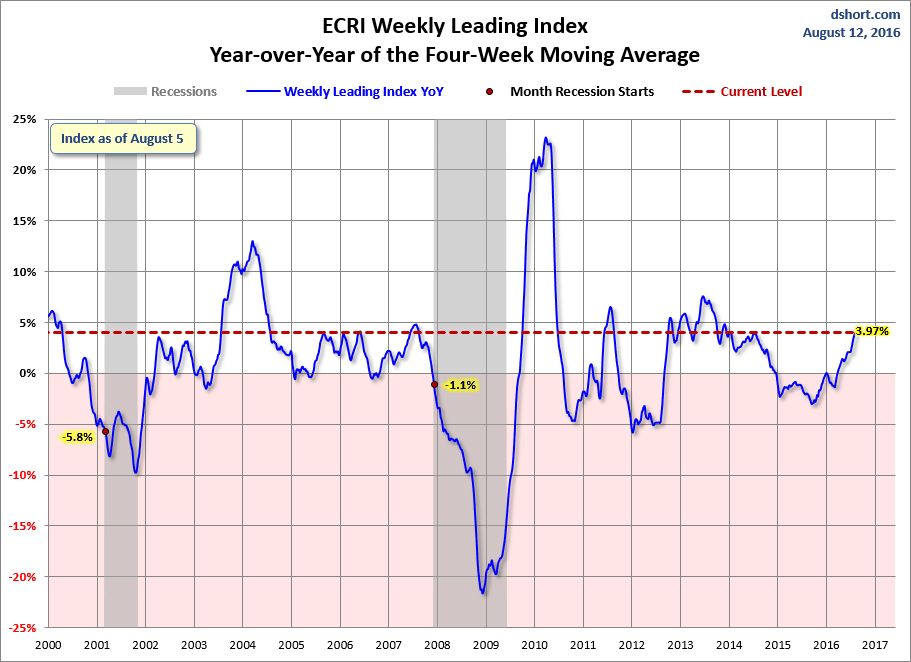Update ECRI indikator:
Today’s new release of the publicly available data from the Economic Cycle Research Institute (ECRI) puts its Weekly Leading Index (WLI) at 130.3, up slightly from 130.0 the previous week. The WLI annualized growth indicator (WLIg) is at -4.3, unchanged from the previous week but off the interim low of -5.0 in mid-January.
Conflicting Concerns
The title for the ECRI’s latest public report (full report requires a subscription) offers an interesting perspective on the January Fed Minutes released on Wednesday. Here is ECRI’s opening observation:
| The January Fed minutes released this week were dominated, as usual, by a litany of conflicting concerns. Buried within it, though, was a significant sentence echoing our apprehension that the available policy tools have become unworkable: “The risks to the forecast for real GDP growth were viewed as tilted a little to the downside, reflecting the staff’s assessment that neither monetary policy nor fiscal policy was well positioned to help the economy withstand adverse shocks.” (italics ours). The desire to be better positioned to counter negative shocks lies at the root of the Fed’s reluctance to push off rate hikes. |
The ECRI Indicator Year-over-Year
Below is a chart of ECRI’s smoothed year-over-year percent change since 2000 of their weekly leading index.
Appendix: A Closer Look at the ECRI Index
The first chart below shows the history of the Weekly Leading Index and highlights its current level.
For a better understanding of the relationship of the WLI level to recessions, the next chart shows the data series in terms of the percent off the previous peak. In other words, a new weekly high registers at 100%, with subsequent declines plotted accordingly.
As the chart above illustrates, only once has a recession ended without the index level achieving a new high — the two recessions, commonly referred to as a “double-dip,” in the early 1980s. Our current level is still off the most recent high, which was set back in June of 2007. We’ve exceeded the previously longest stretch between highs, which was from February 1973 to April 1978. But the index level rose steadily from the trough at the end of the 1973-1975 recession to reach its new high in 1978. The pattern in ECRI’s indictor is quite different, and this has no doubt been a key factor in their business cycle analysis.






